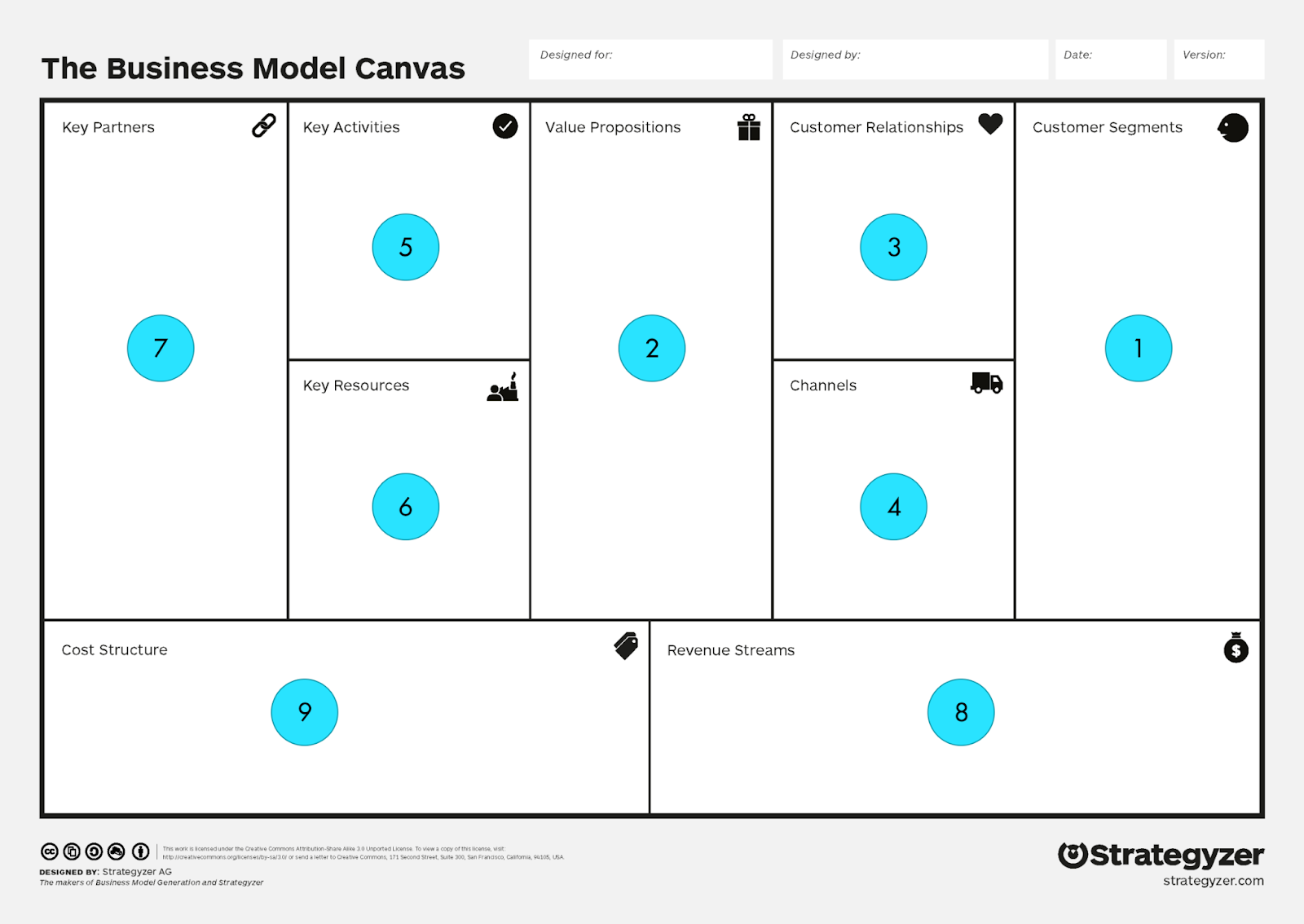Business Model Canvas

What is the Business Model Canvas?
The Business Model Canvas provides a structured and visual “one-pager” approach to understanding how a company, project, or product can create, deliver, and capture value. It’s essentially a snapshot that helps describe and assess new or existing business models.
Developed in 2010 by Yves Pigneur and Alexandre Osterwalder, authors of “Business Model Generation,” the Business Model Canvas was initially intended to be a tool for entrepreneurs and small business owners. Since then, it has been widely adopted by companies of all shapes and sizes around the world. There are many reasons for this:
- It has many use cases. At the start of a project or product development cycle, for example, it can help teams identify a clear path towards success. On the other hand, once a project or product has launched, it can be used to assess and refine the current business model based on evolving market trends or other constraints.
- It is highly visual. Unlike a traditional and detailed business plan, the Business Model Canvas provides a snapshot of a business’s or product’s economic model that can be understood easily at a quick glance.
- It connects the dots. Once completed, the Business Model Canvas helps teams both see the links between different aspects of a business or product and also highlight potential or problematic gaps. This is essential for being able to prioritize key areas of improvement to help a new or existing business model over time.
- It is fun to create. The Business Model Canvas workshop is all about identifying a path toward innovation. It’s an exercise in creativity—without a definitive start and finish—and a great tool for constantly challenging yourself and finding new ideas.
How to complete the Business Model Canvas
Sometimes called a “business matrix,” the Business Model Canvas is made up of nine key sections built around three key themes:
- Desirability (Sections 1 to 4): How does the business create value?
- Feasibility (Sections 5-7): How does the business deliver value?
- Sustainability (Sections 8 and 9): How does the business capture value?

As you work through the nine different sections, you should ask the following questions:
-
Section 1: Customer Segments
Who are your customers?
What target demographics are you hoping to serve?
Are they consumers (B2C) or other companies (B2B)? -
Section 2: Value Proposition
How are you addressing customer problems?
How can your business or product offer to address those problems?
Why should your customers prefer your business or product over a competitor’s?
What makes your business or product unique? -
Section 3: Customer Relationships
What kind of relationship will you have with your customers?
Are your customers autonomous? Do they require support? Are they a community?
How will you communicate with your customers? What tone will you use?
How do you plan to retain customers? -
Section 4: Distribution Channels
What owned and operated channels will you use to reach your customers?
What third-party channels will you use to promote your business or product?
How will your customers find your business or product? -
Section 5: Key Activities
What activities must be done in-house to create and deliver value?
Which activities can be outsourced? -
Section 6: Key Resources
What resources (human, financial, or material) are needed to deliver value?
What resources are needed to manage the customer relationship?
What resources are you currently lacking? -
Section 7: Key Partners
Who are the partners you can not do business without?
Who are your suppliers?
Who are your advocates?
Who are your other strategic partners? -
Section 8: Revenue Streams
How does your business make money? Do you sell individual (one-off) products or services?
Do you sell subscriptions?
How much are customers willing to pay for your product or service? -
Section 9: Cost Structure
What are the hard costs associated with your business activities?
What are the resource costs associated with your business activities?
How are the costs allocated?
A few things to keep in mind:
- The sections of the Business Model Canvas should be completed in sequential order. There’s a logic to it, as each section builds upon the next.
- Don’t feel the need to start from scratch as you work through the Business Model Canvas. For example, if you’ve already established Personas in another exercise, use those to fill out Section 1. The idea here is to bring all of the pieces together on a single page, not to reinvent the wheel entirely.
- If you haven’t yet established a clear value proposition for your business or product, use the Value Proposition Canvas—another tool created by Alexandre Osterwalder.
- Each of the sections should not be “easy” to complete. Take the time to cover all of your bases and ask all necessary questions. And don’t be surprised if, in the beginning, you’ve identified multiple value propositions or too many customer segments. This is part of the process. The goal is to get all ideas on paper, discuss, refine, and then revisit over time as your business or product evolves.
- As you fill out each of the sections, be sure to keep the content as short, sweet, and concise as possible. Remember, this doesn’t need to be as detailed as a traditional business plan; this is simply a snapshot of your business model. It should be easy to understand at a quick glance.
- Keep in mind that all of the sections of the Business Model Canvas are linked to one another. If you modify the information in one section, you’ll likely need to modify details in other sections. Consistency here is the key to driving long-term profitability.
Suggested resources to learn more about the Business Model Canvas
- An overview video of the Business Model Canvas by Strategyzer: Business Model Canvas Explained
- An article by business consultant Isaac Jeffries explaining how to fill in the sections of the Business Model Canvas: How to fill a Business Model Canvas